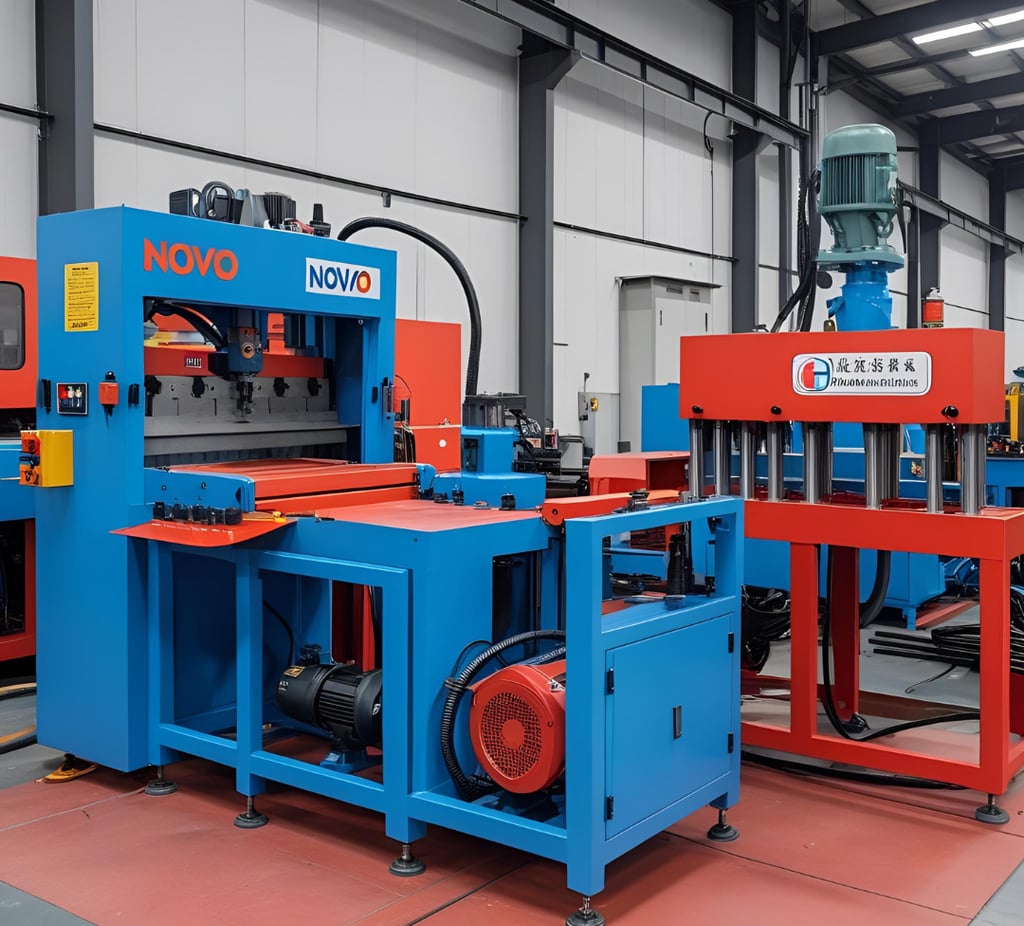Busbar Processing Machines for Solar & Wind Projects
Discover why renewable energy installers can't afford to skip busbar processing machines in solar and wind projects. Enhance efficiency and reliability in your renewable energy installations.
8/2/20254 min read


Introduction to Busbar Processing Machines
Busbar processing machines are specialized equipment designed to automate the fabrication of busbars, which play a pivotal role in electrical power distribution systems, particularly in renewable energy installations such as solar and wind projects. A busbar itself is a metal strip or bar that conducts electricity within a switchgear, distribution board, or other electrical apparatus. By offering a streamlined approach to the manufacturing of these components, busbar processing machines enhance efficiency and accuracy, critical factors for meeting the growing demands of renewable energy infrastructures.
The automation provided by these machines helps in reducing labor costs and minimizing human errors associated with manual processes. Traditional methods of busbar fabrication often involve time-consuming steps that can lead to inconsistencies and inaccuracies, ultimately hampering the effectiveness of power distribution. In contrast, busbar processing machines are capable of producing precise and uniform busbars that adhere to stringent industry specifications, thereby ensuring optimal performance in renewable energy applications.
These machines utilize advanced technology to carry out complex operations such as cutting, punching, and bending of busbars. The integration of programmable logic controllers (PLCs) and computer numerical control (CNC) systems in modern busbar processing machines further enhances their precision, allowing for the quick changeover between different busbar configurations that may be required for various projects. As renewable energy installations become increasingly intricate, the ability to fabricate busbars with high precision and efficiency becomes ever more essential.
Moreover, with the growing emphasis on sustainability and the need to reduce operational costs, the deployment of busbar processing machines allows installers to maximize their resource allocation while ensuring reliable electrical distribution. In this competitive field, neglecting the benefits of busbar processing machines could lead to missed opportunities for improving project delivery times and overall quality of renewable energy ventures.
The Importance of Busbars in Renewable Energy Systems
Busbars serve a critical role in renewable energy systems, particularly within solar and wind energy setups. Acting as the backbone of electrical connections, busbars efficiently facilitate the distribution of electricity produced by these renewable sources. In simple terms, they function as conductive bars that connect multiple electrical circuits, allowing for the seamless transfer of power generated from solar panels or wind turbines to the grid or energy storage systems. This functionality is essential for optimizing energy flow and ensuring that renewable energy systems operate reliably and effectively.
In solar energy systems, busbars are integral components that connect photovoltaic (PV) cells in solar panels. They help collect and transmit the direct current (DC) electricity generated by the solar cells to inverters, which convert it into alternating current (AC) for use in the electrical grid. The efficiency of power transmission is highly dependent on the busbars' conductivity, as higher conductivity leads to lower energy losses. Additionally, the thermal performance of the busbars must be considered, since they can generate heat due to electrical resistance, which could result in significant power losses and even damage to the system if not adequately managed.
Similarly, in wind energy systems, busbars play a vital role in linking the various components, including generators and control systems. In wind turbines, the generated electricity needs to be pooled and transferred effectively to maintain system stability. The selection of appropriate materials and the design of busbars are crucial to ensuring they can handle the increased load without compromising performance. The technical specifications of the busbars must cater to both conductivity and thermal management to sustain the operational efficiency of renewable energy systems.
Advantages of Using Busbar Processing Machines for Installers
In the realm of renewable energy projects, particularly in solar and wind installations, the use of busbar processing machines presents several noticeable advantages for installers. One of the most significant benefits is the improved accuracy these machines offer. By utilizing advanced technology, busbar processing machines ensure that components are cut and shaped to precise specifications. This high level of precision reduces the potential for errors, ultimately leading to better performance in the energy system.
Another critical advantage is the reduction in labor costs. Traditionally, processing busbars required extensive manual labor, often involving multiple workers and time-consuming methods. Busbar processing machines streamline this process, allowing a single operator to efficiently handle tasks that would typically require a larger workforce. This not only saves on direct labor expenses but also minimizes the chances of on-site injury, contributing to a safer working environment.
Time savings are an undeniable benefit as well. By speeding up the busbar processing workflow, these machines significantly accelerate project timelines. Faster processing leads to more rapid installation, which enhances the overall efficiency of the renewable energy project. Moreover, with the ability to produce busbars at a quicker pace without sacrificing quality, installers can take on more projects within the same time frame, increasing their operational capacity.
Furthermore, integrating busbar processing machines into operations allows installers to better meet stringent industry standards. High-quality installations are essential in maintaining compliance with regulations and achieving certifications in the renewable sector. Enhanced safety protocols through automated processing also improve installation quality, leading to increased customer satisfaction and retention. Overall, the use of busbar processing machines aligns with the growing need for efficiency, precision, and safety in renewable energy projects.
Conclusion: The Future of Renewable Energy Installations
The integration of busbar processing machines into renewable energy projects is becoming increasingly critical as the demand for efficient energy solutions continues to rise. As the renewable energy market grows, installers must recognize the significant advantages offered by these innovative technologies. Busbar processing machines enhance the efficiency of solar and wind installations by streamlining electrical connections, reducing labor costs, and increasing long-term reliability. By investing in such machinery, renewable energy installers can not only improve their operational efficiency but also stay competitive in a rapidly evolving market.
Looking ahead, the future of busbar processing technology is promising. Trends such as automation, precision engineering, and the adoption of smart technologies will likely play a pivotal role in shaping the industry. These advancements aim to create even more efficient, reliable, and cost-effective busbar solutions tailored to the specific needs of solar and wind projects. As these innovations emerge, they will set new standards for energy installation processes, compelling installers to adapt quickly to remain relevant in the market.
Furthermore, as the industry's focus shifts towards sustainability and eco-friendly practices, the importance of employing cutting-edge technology like busbar processing machines will only grow. Innovations in materials science, for example, may lead to lighter and more efficient busbars, which directly impact the overall effectiveness of renewable energy systems. Failure to embrace these advancements could jeopardize operational success, whereas proactive adoption will empower installers to meet rising client expectations while maximizing profitability.
In summary, for renewable energy installers, the time to invest in busbar processing machines is now. Embracing this essential technology will not only enhance project efficiency but will also pave the way for success in a future increasingly defined by renewable solutions.
Innovate
Leading manufacturer of busbar processing equipment solutions.
Contact
Support
+131 2713 4627
© 2025. All rights reserved.
